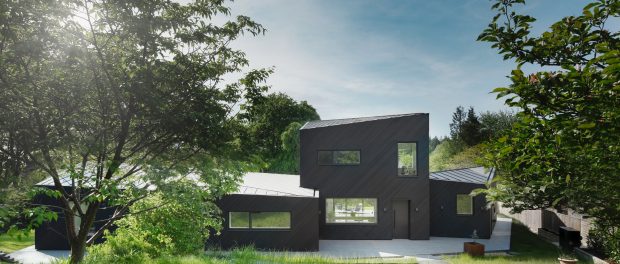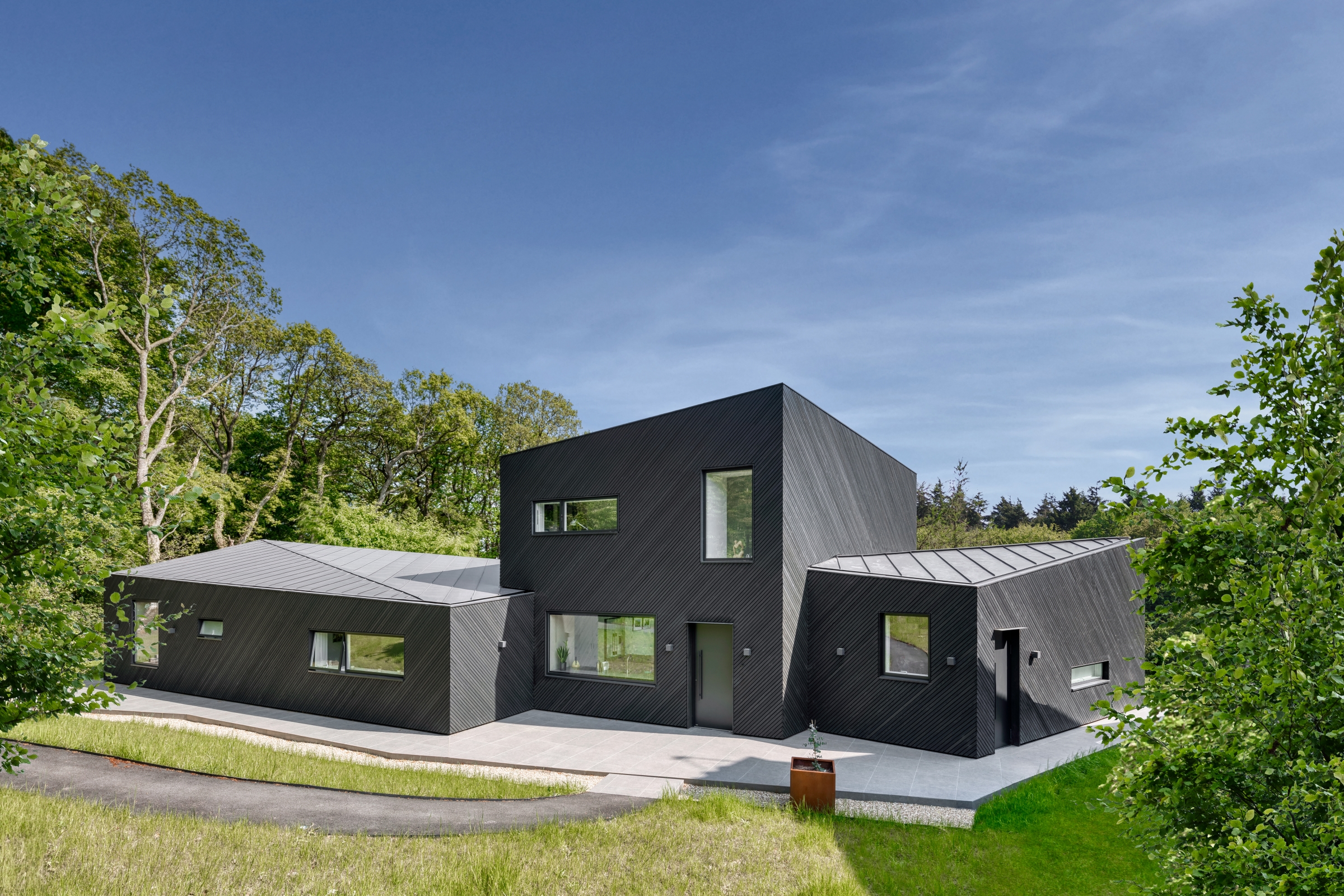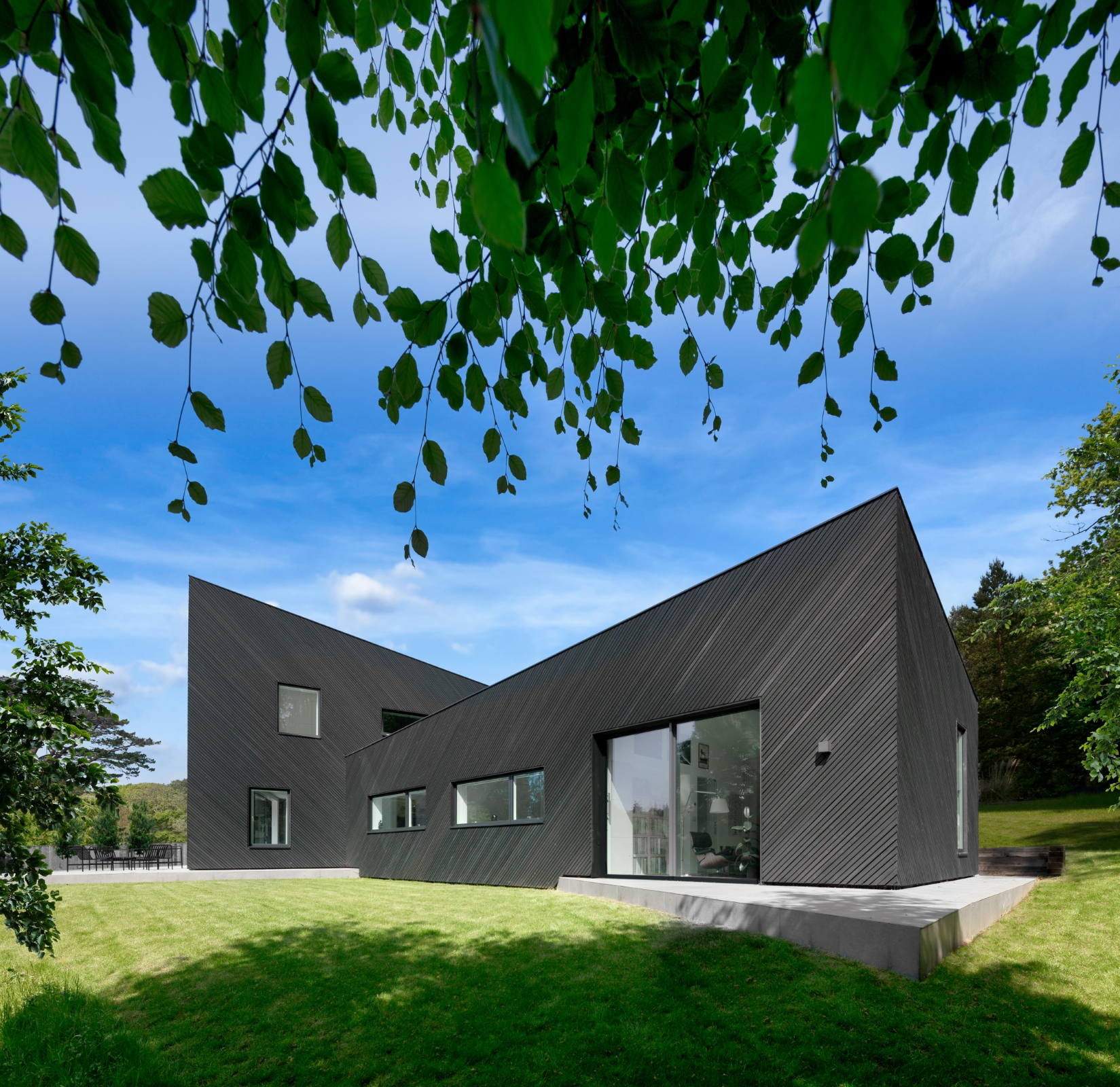Woodland House

Architect:
Tom Ford – Architect| Andy Ramus – Architect
AR Design Studio
Calpe House
20 Little Minster Street,
Winchester,
SO23 9HB, UK
www.ardesignstudio.co.uk
https://www.instagram.com/ardesignstudio/
Photographer
Martin Gardner www.martingardner.com
Size
Total- 245sqm GEA
Contractors and Suppliers
Contractor – Mew Developments
Approved Inspector – Stroma
SAP Assessor – Darren Evans
Structural Engineer – PCRM
Millworks – Timber Cladding
VM Zinc UK – Metal Roofing
VELFAC – Window Supplier
Smart System – Large Format Glazing Supplier
RK Door – Front Door Supplier

Description
Woodland House is a private, bespoke replacement dwelling located in East Devon completed in late 2022 by award-winning Winchester-based Architects, AR Design Studio. The clients approached AR seeking to relocate from the hustle and bustle of London to the tranquillity of rural Devon. Their children had left home, meaning that they were able to downsize, and so they were presented with the opportunity to pursue their lifelong dream and create their dream contemporary home.
Having previously lived in Grade II listed London properties they were keen to create a high quality new build house that was warm, air tight and most importantly, energy efficient. With now grown up children the house was to be a spatially efficient home for the two of them, but also be able to accommodate the family during holidays or for longer periods if needed. Embarking on this journey just as COVID began, designing a house bespoke to their needs and tailored to their way of living became even more important as being at home and working from home became more significant parts of life.
The site lies within a pocket of houses surrounded by Forestry Commission conifer plantations; this deciduous woodland creates an enclosed, intimate setting during summertime but opens up to the valley in winter. The design perches on an existing plateau of flat ground, meaning that it benefits from far reaching elevated views down the sloped garden into the valley beyond, and simultaneously short views to mature woodland that bounds the property.
Due to its setting, biodiversity was considered throughout the design process; a specific garden space was established for meadow wildflowers, and woodland perennials cover the ground under trees.
The house is broken into three distinct volumes; the two-storey central volume is flanked by single storey wings. Two of the volumes provide the spatially efficient living areas required by the client. The third provides further accommodation for the family when needed and is able to be shut off when not in use to ensure no excess energy consumption or heat loss.
The angular geometry responds to the views and contours of the site, growing in plan and elevation and mimicking the hillside undulations of the wider landscape. The geometry is further reinforced through the materiality and detailing, with diagonal larch cladding accentuating the angles of each volume. The timber cladding has been double mitred at the corners with no profile edging to ensure a sharp finish. Considered openings have been sparingly cut into volumes to frame specific views.
Entering the site at the top of the slope, the central volume is framed by two trees, and a sweeping path leads to the front door. Upon entry to the principal family space a framed view to the valley beyond is immediately presented. Internally, the dynamic roofscape creates vaulted ceilings providing varying spatial experiences, and a handmade plywood kitchen is a feature of the open plan living space.
To one side of the central space is a semi-separated living space, and to the other a corridor with a frame view at the end leading past bedrooms to the clients’ music room. A timber clad staircase connects the two floors, and this materiality continues at first floor with an engineered oak floor. On the first floor is the master suite with a large picture frame view of the tree canopies and valley beyond.
The energy efficiency and sustainability of the house was a key element of the clients dream; the sculpted roof forms is angled advantageously for Photovoltaic panels and this coupled with the installation of an air source pump heating system creates a zero-combustible household. The wall, floor and roof build ups achieve U-values of 0.13 W/m2K to 0.16 W/m2K; this highly specified construction and a fabric first approach to detailing has ensured the completed project has achieved an ‘A’ EPC rating for thermal comfort. The real-time energy consumption data has illustrated the dwelling’s energy efficiency, achieving 60% self-sufficiency across a 1-year active period.

